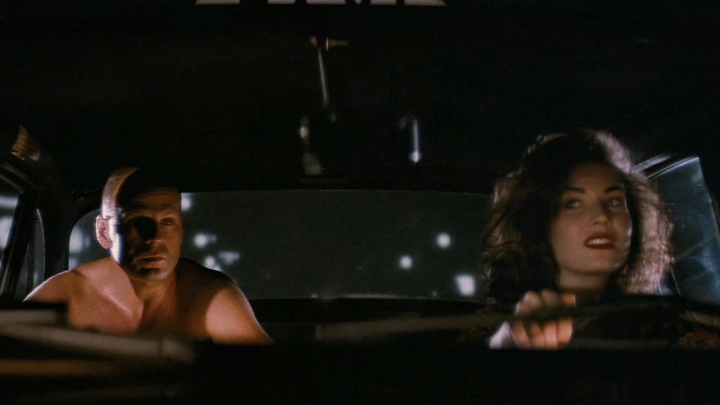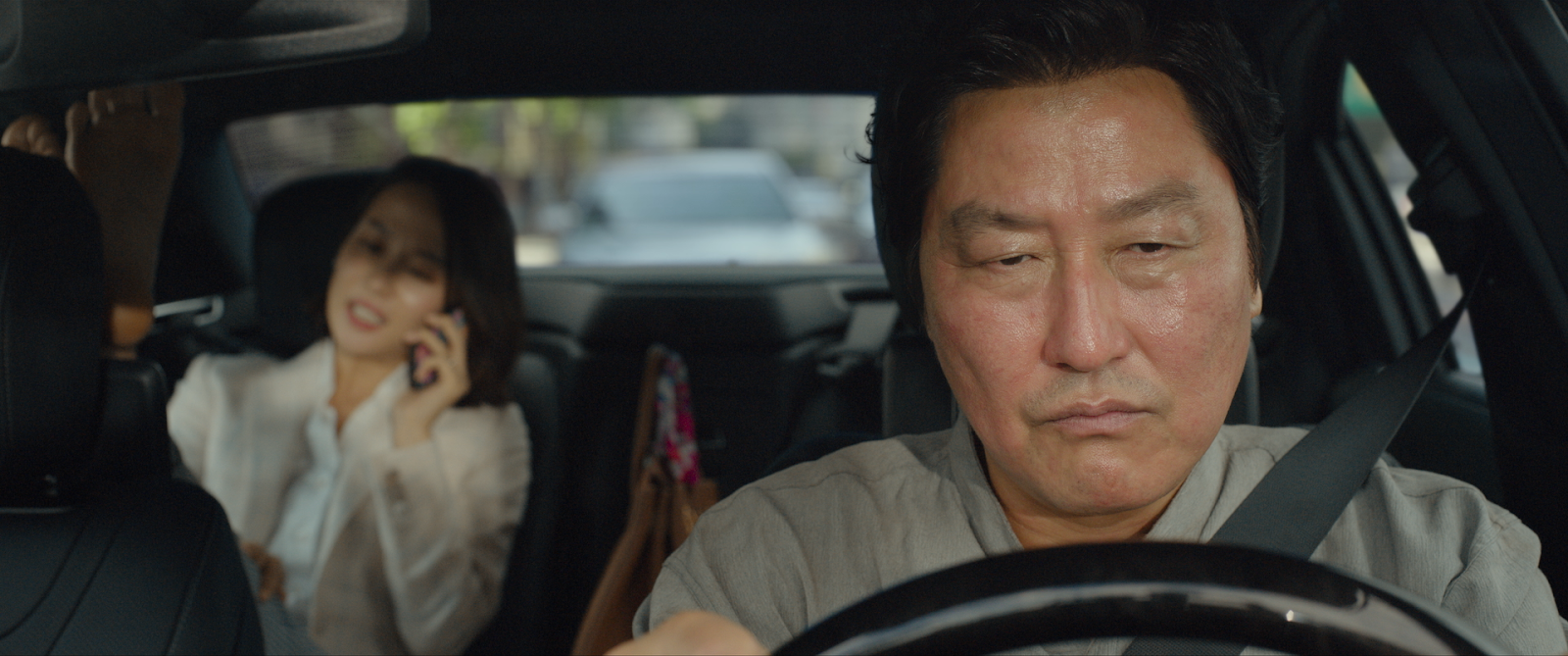Historically, the driver is symbolic of class difference. The driver, or ‘chauffeur’ is hired, often by wealthy individuals who can afford the luxury of employing another person to drive their vehicle for them. Dating back to the early 1900s, the chauffeur was initially necessary to operate sophisticated automobiles, which required incredible maneuvering and skill. Fast forward to the modern day and employing a driver is purely a mode of flaunting wealth. The modern-day automobile is much more navigable and safer to drive, with sat-nav, rear cameras, and parking assistance technology. Yet, limo drivers and personal chauffeurs still exist, in addition to capitalist society’s deft twist: Uber and Lyft.
Think briefly about what you do when you have a driver or use a rideshare app. Where do you sit? Do you go out of your way to talk to the driver? Do you stare at your phone?
Naturally, the relationship between the driver and the passenger brings forth a feeling of division and separation. Not only are we socially conditioned to act and feel this way, but we also see it represented in popular culture at home and abroad. In Quentin Tarantino’s 1994 film Pulp Fiction, Taxi driver Esmarelda Villalobos escorts the boxer Butch Coolidge away from a match in which he had just killed the opposing fighter in the ring. Villalobos’ snooping personality quickly makes the connection, asking if he was the boxer in the fight and what it felt like for Butch to kill another man. These aren’t your normal pleasantries exchanged, as Villalobos abrasively tries to tap into the brain of Butch. Resigned to the backseat, Butch dodges her prodding questions. The dialogue of the scene reflects the psychological nature of the human impulse to be wary of strangers, instilled in us from a young age.

Taxi Driver Esmarelda helps Butch escape, Pulp Fiction (1994). (Photo by: Nick Armitage)
Similar themes take shape in other countries, specifically in director Bong Joon Ho’s 2019 film Parasite, a self-reflexive comedy-thriller that comments on themes of social class issues in South Korea. One of the main characters, Kim Ki-Taek, becomes a driver for the upper-class Kim family. In the film, the driver is an important reminder of the class distinction between the Kims and the Parks. In one scene, the mother sits with her feet up in the back of the car chatting to a friend on the phone, completely ignoring Ki-Taek as he drives in silence. The space feels cut off, split into the front and back of the vehicle as Mrs. Park has designated the backseat as her own personal space. In another scene, Mr. Park thanks Ki-Taek for assisting with an issue but then swiftly scolds Ki-Taek to keep his eyes on the road, once again placing a social barrier between the two. Ki-Taek returns to his position of lower-class driver serving the elite upper class. Bong’s cinematographic efforts serve a clear purpose in visually separating the two, even though they are operating in the same sphere.

Ki-Taek drives Mrs. Park around town, Parasite (2019). (Photo by: Nick Armitage)
Now, consider the Uber driver. In many ways, the rideshare driver has taken the place of the chauffeur in modern times. Recent studies have summarized the reason for Uber’s incredible rise, as customers have cited convenience, choice of car, and affordability as reasons why they use the app. In 2018, Uber estimated that they had 3 million drivers around the world, some part-time, some full-time, driving people to their respective destinations. Due to the number of drivers, in the eyes of the passengers they are expendable. They come and go as a mode of transportation that allows us to proceed living our normal, everyday lives. Uber’s concept plays exactly into the ways we have become accustomed to behaving in society through its targeting of individuality and convenience. Passengers are assigned a driver, therefore relieving them of any loyalty or necessity to develop a connection with their driver. Yet, in the city of New Orleans, our rideshare drivers offer a completely different way of considering the function of the driver and their effect on the passengers they encounter.
New Orleanians are a social people, in good times and bad, by choice and also by necessity. We lean on each other during hurricane season, and we celebrate with each other during Mardi Gras. The connections we make, the memories we share, and the experiences we can relate to are the bonds that hold the New Orleans community so tight.
It would make sense, then, that the rideshare drivers have taken this ingrained sociability and applied it to their jobs. It’s difficult to find an Uber driver here who isn’t willing to share conversation with their passengers. There might be some of you reading who just want to give their driver a 5-star rating after a silent ride, no questions asked. But let’s be honest with each other, there’s really no fun in that at all.
A friend of mine who had gotten an Uber from the Airport on his first trip to New Orleans texted me during his trip, “Man, I didn’t really feel like I was in the South until I got in this Uber!” He later remarked about the full, in-depth conversation they had in just the 30 minutes from the airport, ranging from basketball to college stories. A car ride from the airport was my friend’s first introduction to the unique feeling of New Orleans, not a trip to the French Quarter, bowl of Gumbo, or ride on the streetcar.
An emphasis on the importance of hospitality in the South has historical roots dating back to the early 1800s. Grandeur and class were inherently linked to the concept, as wealthy planters aimed to show off their riches to whoever their guests were. Yet, in New Orleans, our rideshare drivers show that hospitality can be completely authentic and raw. Hospitality no longer needs to be defined by economic standing, but rather through authenticity and uniqueness, two traits closely linked to New Orleans culture. It’s the little things, the neutral ground, red beans and rice on Tuesdays, or the subtle twang in the ever-present “how ‘ya doin’ baby” greeting that allow New Orleans to stand out.
Another ride involved an eclectic man with flashing Christmas lights, beads, and TV screens decorating his Honda Civic. After complimenting him on his decorative ability, he remarked, “If I’m out here all day, I want to make this my own.”
New Orleans rideshare drivers find a way to break that historical social barrier of driver/passenger, and in doing so illuminate the unique culture that New Orleans has to offer while also relating to each person who takes a seat in the back of their car. They’re honest, hardworking people who, in many ways, go unnoticed, working in a field that the public doesn’t think twice about. Yet, many have managed to pull off an unthinkable feat: making a 15-minute car ride unforgettable.
 NOLAbeings Multimedia artist Claire Bangser created NOLAbeings as a portrait-based story project that marries...
NOLAbeings Multimedia artist Claire Bangser created NOLAbeings as a portrait-based story project that marries...  Voodoo in New Orleans: Reviving history: New Orleans fortune telling This article takes a deep dive into the history of Voodoo in New Orleans, its hybridization with Catholicism, and its present-day place in the city's culture. The author visits fortune-tellers in the French Quarter, using their guidance as a tool for introspection rather than a deterministic predictor of the future. Through her experiences in New Orleans, the author feels a mystical connection to both the past and the future.
Voodoo in New Orleans: Reviving history: New Orleans fortune telling This article takes a deep dive into the history of Voodoo in New Orleans, its hybridization with Catholicism, and its present-day place in the city's culture. The author visits fortune-tellers in the French Quarter, using their guidance as a tool for introspection rather than a deterministic predictor of the future. Through her experiences in New Orleans, the author feels a mystical connection to both the past and the future. 